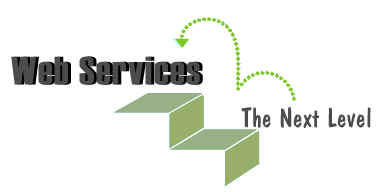AutomatedBuildings.com
Article - April 2002
[Home Page] |
[an error occurred while processing this directive]
(Click Message to Learn More) |
|
|
|

|
Just
like the next level in a video game, moving our Building Automation
Industry Information and Interaction to the evolving WEB SERVICES LEVEL
changes everything, new rules, new power, and a new Information Model.
Ken
Sinclair
AutomatedBuildings.com
|
What are Web Services?
IBM says, "Web services are
self-contained, modular applications that can be described, published, located,
and invoked over a network, generally, the World Wide Web."
Microsoft's description is more succinct,
"a Web service is programmable application logic, accessible using standard
Internet protocols,"
Others define Web services as a business
logic or information made available using the XML (Extensible Markup
Language)-based SOAP (Simple Object Access Protocol).
Technologies and protocols have been developed
that can integrate existing business processes and resources and make them
available over the Web. Users looking for tools to develop Web services have new
integrated environments to choose from that offer everything from Web servers to
application development tools.
Why am I telling you about Web Services?
Our industry is starting to become very aware of
these trends. I will use the following article as an example but others on our
web site are suggesting similar direction. The article is from our January issue
of AutomatedBuildings.com and is called Information Model: The Key to
Integration http://www.automatedbuildings.com/news/jan02/art/alc/alc.htm
by Eric Craton, Product Development and Dave Robin, Software Development at http://www.automatedlogic.com/
It States:
Web services are a new breed of
Web application. They are self-contained, modular applications that can be run
over the Internet and can be integrated into other applications. Web services
perform functions that can be anything from simple requests to complicated
business processes. For example, a weather bureau could offer a Web service that
allows a building automation system to automatically retrieve temperature
forecast data for use by various control algorithms. Similarly, the building
automation system itself could offer a Web service that allows a tenant's
accounting system to obtain up-to-the-minute figures on energy consumption. In
the past, this type of data exchange would require a custom, "hard
coded" data request to retrieve information that already existed in the
host computer. A Web service, on the other hand, is a way to allow any
authorized client to actually run an application on the host computer and
generate data that didn't previously exist. In our accounting example, the
tenant's computer would provide information on the inclusive dates and building
areas, and the Web service host computer would calculate and return the energy
consumption data.
[an error occurred while processing this directive]The
article further states:
Since BACnet and EIB objects and
LonMark functional profiles are information models, and XML is a modeling
language, we could express these high level information models in XML and in so
doing make them compatible with the emerging Web services architecture.
Goes on:
If each building automation
protocol developed its own XML model, however, we would have similar but
incompatible system models. Today's problems of translating from one protocol to
another at the building controller level would become tomorrow's translation
problems at the Web services level. What's needed is a unified system model, in
XML, that can be used by any building automation protocol.
Concludes:
XML, TCP/IP, or even Web services
alone cannot provide interoperability between vendors. In order for
interoperability to occur, vendors must not only agree on HOW they will
communicate, but also on WHAT they will communicate. Because they include a
high-level abstraction of what information is to be communicated, BACnet, EIB,
and LonMark all provide the WHAT component of interoperability. By combining
these information models with XML, and expanding the objective to include other
non-HVAC related aspects of the facility, Web services can provide an
information platform that is high-level, cross-platform, cross-discipline, and
multi-vendor. A new initiative is needed to define a comprehensive information
model for the facility.
AutomatedBuildings.com very much agrees with the
direction of this article and others on our site and has responded by creating
an online forum http://automatedbuildings.com/webservices.htm
to assist the evolution of the Web Services Information Model.
An overview pictorial uses a simple, possible web
services application to allow industry stakeholders to quickly grasp the reach
of the Web Services level of information and interaction. It is hoped that this
starting point and our linked resources will open the industry minds to the
importance of opening dialog now on how an Industry Web Services Information
Model could evolve.
A first cut has been made at Guidelines,
Probable Industry Applications, an Industry Call to Action, plus Links to
Known Resources. Your input is important. Please share your views as to the
best method of creating Information Model Guidelines. Email us at WebServicesModel@AutomatedBuildings.com
Published
March 2002 
[an error occurred while processing this directive]
[Click Banner To Learn More]
[Home Page] [The
Automator] [About] [Subscribe
] [Contact
Us]
